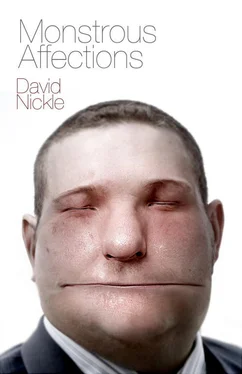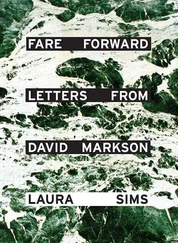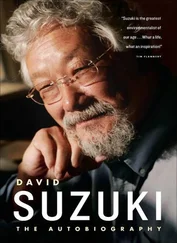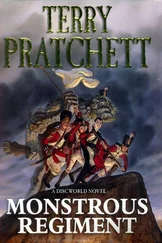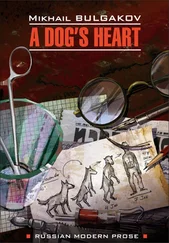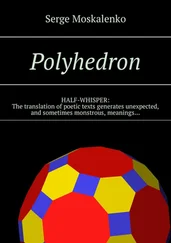David Nickle - Monstrous Affections
Здесь есть возможность читать онлайн «David Nickle - Monstrous Affections» весь текст электронной книги совершенно бесплатно (целиком полную версию без сокращений). В некоторых случаях можно слушать аудио, скачать через торрент в формате fb2 и присутствует краткое содержание. Город: Toronto, Год выпуска: 2009, ISBN: 2009, Издательство: ChiZine Publications, Жанр: Ужасы и Мистика, на английском языке. Описание произведения, (предисловие) а так же отзывы посетителей доступны на портале библиотеки ЛибКат.
- Название:Monstrous Affections
- Автор:
- Издательство:ChiZine Publications
- Жанр:
- Год:2009
- Город:Toronto
- ISBN:978-0-9812978-3-5
- Рейтинг книги:5 / 5. Голосов: 1
-
Избранное:Добавить в избранное
- Отзывы:
-
Ваша оценка:
- 100
- 1
- 2
- 3
- 4
- 5
Monstrous Affections: краткое содержание, описание и аннотация
Предлагаем к чтению аннотацию, описание, краткое содержание или предисловие (зависит от того, что написал сам автор книги «Monstrous Affections»). Если вы не нашли необходимую информацию о книге — напишите в комментариях, мы постараемся отыскать её.
Can it be love?
Monstrous Affections — читать онлайн бесплатно полную книгу (весь текст) целиком
Ниже представлен текст книги, разбитый по страницам. Система сохранения места последней прочитанной страницы, позволяет с удобством читать онлайн бесплатно книгу «Monstrous Affections», без необходимости каждый раз заново искать на чём Вы остановились. Поставьте закладку, и сможете в любой момент перейти на страницу, на которой закончили чтение.
Интервал:
Закладка:
“ Keep your paints in the tubes .” Jim rolled the words thoughtfully. “Or did you mean keep your tube in your pants? Those art club biddies can be pretty spry, I hear.”
Paul laughed, but it was a distracted sound, barely an acknowledgement. He was never easy with vulgarity.
Paul continued: “The geography around this town is spectacular. It’s all rock and scrub, a few stands of poplar and cedar here and there, and it’s had the life mined out of it. But I don’t think it’s possible to make a bad painting there.”
Jim was about to say something, but I shushed him. “High recommendation,” I said.
Paul grinned. “The pit-heads outside Cobalt are a Mecca for those ladies — they swear by them, and I can’t argue based on the results.”
“Practice makes perfect,” deadpanned Jim.
Paul gave Jim a look, but I cut in before he could comment. “Just what kind of pit-heads are these?” I asked. I was only twenty-five then, and almost all of the out-of-town painting trips I’d been on had been with Paul and the rest — which pretty much limited me to Algonquin Park and one quick trip up to Lake Superior.
Paul pulled out his sketch pad and began roughing out an illustration: “Here’s what they look like.”
Harry put down the paint-smeared panel he’d been swearing over all afternoon and studied Paul’s drawing in the failing light.
“Do you want to do a trip there?” Harry finally asked.
Paul swatted at a black fly on his neck, and examined the little bloody speck on his hand. “It’ll be one hell of a drive — about eight hours from your place in good weather, and I want to go up in November when the snow will have started. It’s a long way to go for a painting.”
Harry took another look at the sketch, then at his own failed oil painting. “This—” he threw his arms up to include the entire Group-of-Seven, Tom-Thomson splendour of Algonquin Park on a clear summer evening “—is already a long way to come for a painting. And by the looks of things tonight, I don’t even have a decent one to show for it. Give me a call when you’ve set a schedule; I’m in.”
Paul smiled and set down the sketch on the flat of a rock for all of us to see. It was crude, but I think it may have been the most accomplished work we’d ever seen from Paul to that date. His carpenter pencil had roughed out the thick spruce beams that splayed out from the narrow, peaked tower head, which Paul had represented with a carelessly precise rectangle of shadow. The trestle emerged from the far side, a jumble of cross-beams and track that draped like a millipede over the spine of a treacherous spill of rock. The thin curves and jags suggesting hills and a treeline seemed like an afterthought — although Paul would scarcely have had time for one. He had completed the whole, perfect sketch in less than a minute.
“Any other takers?” Paul asked, in a tone that suggested there might have been a real question.
The forecast had called for frozen rain in the Hailiebury area, but by the time we pulled onto the mine road the air was just beginning to fill with fine, January-hard snowflakes. They caught in the crevasses and crannies of the low cliffs that rimmed the mine road, making thin white lines like capillaries of frozen quartz.
I watched Paul’s taillights through the scratch of snow. He drove an old Ford panel van, and he had set up a small household in the back of it — a foam-rubber mattress near the back for sleeping, a little chemical toilet tucked in a jury-rigged bracket behind the driver’s seat, a big cooler filled with enough groceries to feed him for several weeks if need be. And a 12-gauge shotgun with a box of ammunition, in a case beside the mattress, for painting trips during bear season. Paul made his living from his painting, but it wasn’t enough of a living to spring for a week in a motel every time he went off on an overnight painting trip. The rest of us followed his lead.
It was scarcely four o’clock, but darkening towards night already, when we finally reached the pit-heads of the Royal Mine. We pulled up on the edge of a wide gravel turnaround maybe three hundred feet downslope from the nearest of the two pit-heads.
The turnaround was near the top of a great boulder of a hill, gouged by glaciers from the tiny slit of a lake that was barely visible through a stand of poplar to the north. The two ancient pit-heads rode that hill’s peak, like signal-towers for some forgotten empire.
“We won’t have enough light to get any work done tonight,” said Paul as he emerged from his van. “But we should be able to go up and have a look inside before nightfall.” He hefted a big, ten-battery flashlight on a shoulder-strap he’d tied together from old bootlaces.
Harry put his hands in the small of his back and stretched, making a noise like an old man. “Are those things safe?” he asked.
Paul tromped past him up the slope towards the nearest pit-head.
“Not entirely,” he said simply. “No, not entirely.”
The pit-head was in disuse that year, so the main room underneath the tower was black and empty. Before anyone went in, Paul speared the flashlight beam inside and ran down a brief inventory of what would otherwise have filled the darkness: the great cable spool, driven by a diesel motor in the back of the hoist house, connected to a wheel that would perch in the very top of the tower, where the belfry would be if this were a church. The bare rock floor of the hoist-house was empty, though, the tower just a dark column of cold, lined by beams and tarpaper; according to Paul, the Royal company had moved their operation out of here three years ago, and had warehoused anything remotely portable in Hailiebury. He ran the flashlight beam across the floor in the middle of the chamber, where the cable would have attached to the lift platform. At first, I couldn’t even see the mouth of the pit: Jim had to point it out.
“It’s pretty small,” said Jim, and he was right: the hole leading into the depths of the Royal Mine wasn’t more than eight feet on a side.
“This was one of the first mines in the area,” said Paul. “One of the ladies from Hailiebury told me it dates back to 1903, when the whole silver rush got its start. Story goes that a prospector found a vein of silver by accident, getting his boot out from where it stuck in a crack in the rock. This pit wouldn’t be legal if it’d been dug today — the minimum width now is something like ten feet.”
“You sound like a Goddamned tour guide,” I said.
Paul chuckled. “Why don’t you go in and take a look for yourself, Graham?”
Not taking my eyes off the pit, I stepped inside the structure. The top of the tower was partly open, and the north wind blew a steady beer-bottle C-sharp across it.
“How deep is it?” asked Harry.
“I didn’t ask.” Paul’s flashlight beam followed me like a spotlight as he spoke.
As I got closer to the edge of the pit, it seemed as though the ground were actually sloping inward towards it, growing unsteady beneath my feet. A smell of machine oil and something like must wafted out of the hole. I stepped back.
“That’s good, Graham,” said Paul, motioning me back to the wall with the flashlight. “Don’t get too close to the opening. I’d hate to have to tell your mother we left you at the bottom.”
Both Jim and Harry sniggered at that, and I laughed as well, with deliberate good humour. I backed up a few more steps, until my shoulders were pressed against an old wooden ladder. The wood felt soft, ancient; like it would crumble under my weight.
“You find this place inspirational, do you, Paul?” I asked, fighting to keep the quaver out of my voice.
“The Art League ladies swear by it.”
Читать дальшеИнтервал:
Закладка:
Похожие книги на «Monstrous Affections»
Представляем Вашему вниманию похожие книги на «Monstrous Affections» списком для выбора. Мы отобрали схожую по названию и смыслу литературу в надежде предоставить читателям больше вариантов отыскать новые, интересные, ещё непрочитанные произведения.
Обсуждение, отзывы о книге «Monstrous Affections» и просто собственные мнения читателей. Оставьте ваши комментарии, напишите, что Вы думаете о произведении, его смысле или главных героях. Укажите что конкретно понравилось, а что нет, и почему Вы так считаете.
